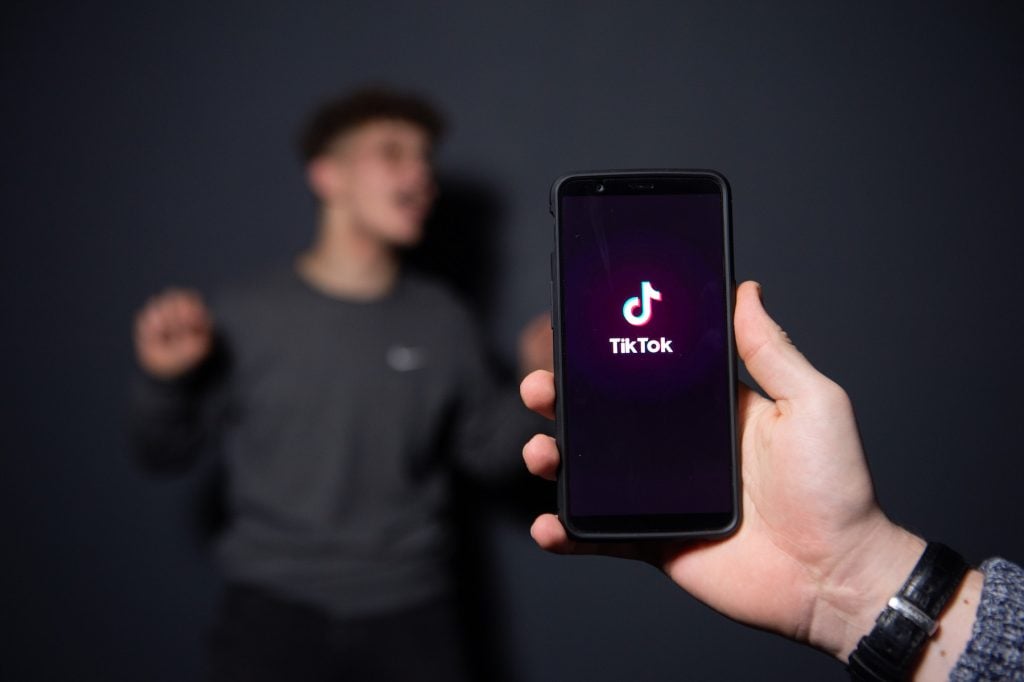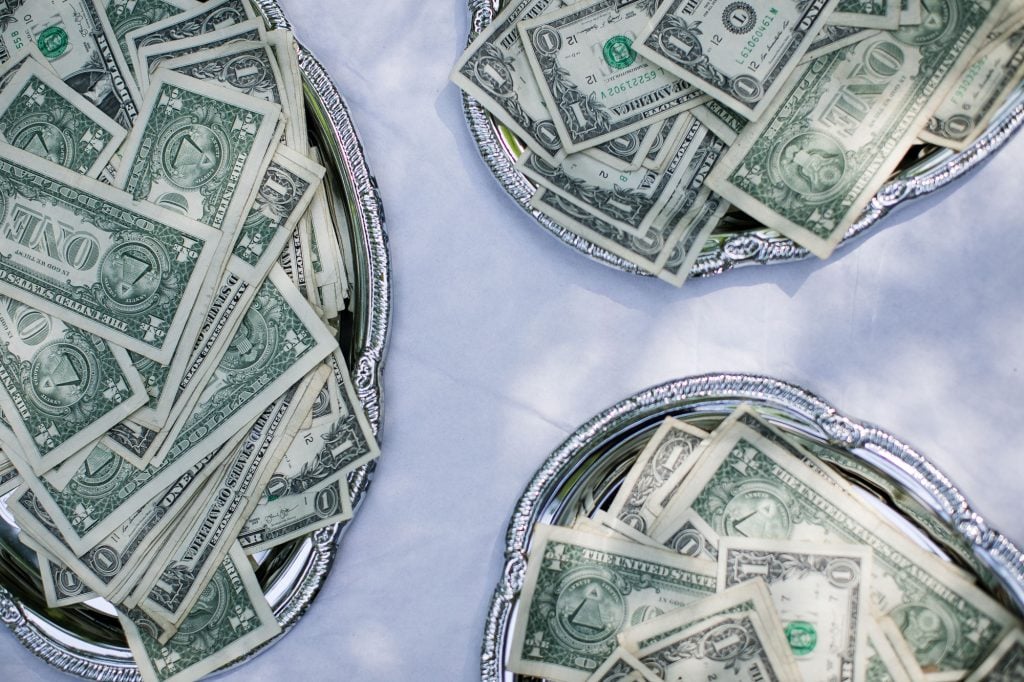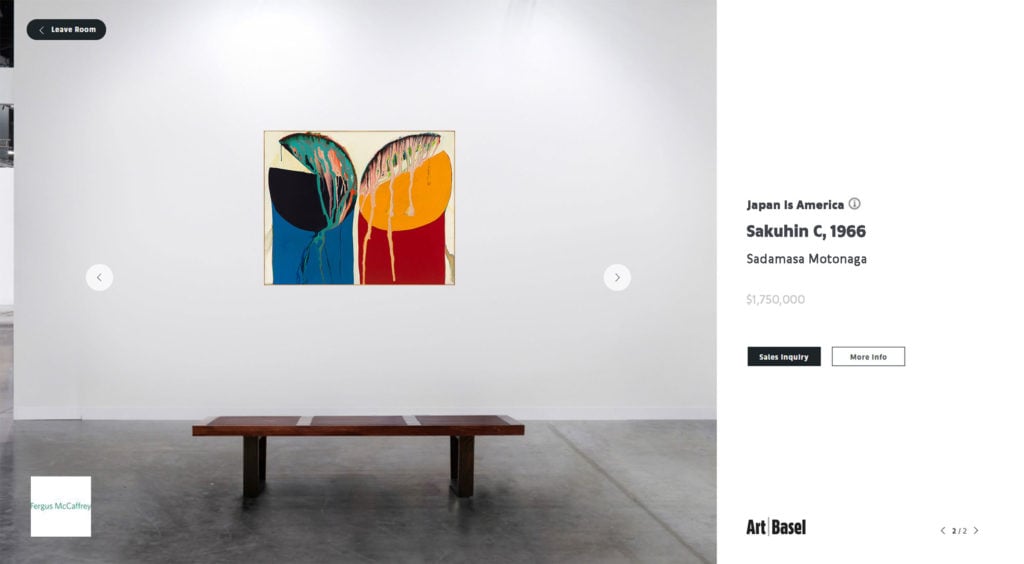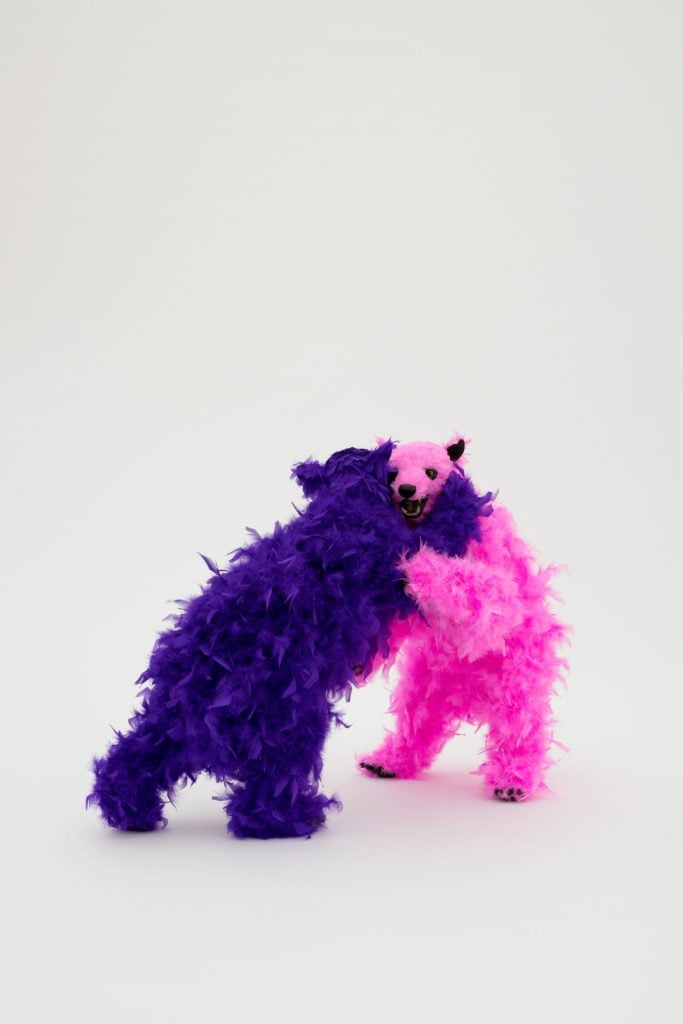Every Monday morning, Artnet News brings you The Gray Market. The column decodes important stories from the previous week—and offers unparalleled insight into the inner workings of the art industry in the process.
This week, a gut check for anyone who thinks there’s no speculation as wild as art-market speculation…
GAMESTOP THE PRESSES
Last Friday, young online day traders notched a stunning win against institutional investors by driving the price of videogaming retailer GameStop to record highs on the New York Stock Exchange. Although the clash over this particular company only recently escalated to newsworthy levels, it is just the latest (and perhaps most heated) campaign in a much longer-building struggle between old Wall Street and a fresh-faced class of investing outsiders.
The story also captures ways in which the stock market represents a kind of photographic negative of the art market: where one is strong, the other is weak, and vice versa. By exploring the points of contrast between the two, we can understand each of the individual markets better—and perhaps begin to think through how much this industry could change, for better or worse.
Let’s work our way up from ground level. GameStop shares opened the year priced at $17.25 yet have launched almost vertically in the time since. Even after more than doubling the prior week, they landed at $65.01 when the markets closed Friday—51 percent higher than where they began trading that same morning, per Bloomberg.
Last week’s finishing kick also ended the company’s “most volatile 10-day period on record,” including a moment Friday when it qualified as “the most actively traded US company with a market value above $200 million.” In short, despite dangling its fattest price tag ever, GameStop was one of the hottest stocks on Wall Street.
Should it have been, though?
For comparison, Citron Research, an influential 20-year-old firm that bills itself as having “amassed a track record identifying fraud and terminal business models second to none among any published source,” projected last week that GameStop would go back to $20 a share. Michael Pachter—a top analyst of software, digital-media, and e-commerce companies for the long-respected financial-services firm Wedbush Securities—judged GameStop to be worth just $16 a share. More telling, that sobering estimate still made his outlook on the company more bullish than all but one other Wall Street analyst tracked in Bloomberg’s database.
So what the hell is going on here? And what does it have to do with the art market?

TikTok has become wildly popular with creators—including artists. (Photo by – / AFP via Getty Images)
YOUTH MOVEMENT
It turns out that many, if not most, of the investors who have been pumping up GameStop this year are young millennials and Gen Z-ers coordinating their day trading via online social networks. The headquarters of this movement is the Reddit forum WallStreetBets, but meme-able investing tips are also thriving on TikTok and other social-media platforms. (For a centralized buffet of the latter content, check @TikTokInvestors, quite possibly my favorite current Twitter account. Just remember that at least some of the kids highlighted there are knowingly trolling balanced-portfolio Boomers.)
Collectively, this demographic’s activity has had an increasingly meaningful impact on Wall Street in recent years. The phenomenon’s roots go back to 2013, when the investing app Robinhood launched with no-fee trading, no minimum-balance requirements, and a game-ified interface meant to attract a younger, less experienced generation of investors. The platform’s self-stated “mission to democratize finance for all” should feel like déjà vu to anyone who has browsed an online art marketplace in the past 30 years.
The allure of day trading from home only became stronger as the 2010s labor market kept millions either mired in jobs with stagnant wages and dim advancement prospects, or unable to find work at all. When the first lockdowns clamped into place last March, the slow erosion of opportunity accelerated almost overnight. Before and after that historic inflection point, the young (particularly people aged 16 to 24) have been among the hardest-hit demographics of US workers.
Thrust into a barren economic landscape, then straitjacketed in their personal lives by social-distancing pressures, is it any wonder that scores of untrained investors might be drawn to the twin suns of fast profits and online camaraderie amid an online day-trading ecosystem powered by a historically strong and resilient market?
The scale of participation has grown drastically of late. Between the end of 2019 and May 2020, Robinhood reported that its user base grew by 30 percent, from 10 million accounts to 13 million. By year’s end, it was the largest online investing platform in the US, topping Schwab (12.7 million accounts) and E-Trade (5.5 million), per the New York Times. Those newly bulging biceps also led venture capitalists to inject Robinhood with another $660 million in funding last September, bringing its valuation to $11.7 billion.
In short, the combined efforts of Silicon Valley and a historically bleak economy have pushed an abundance of young new buyers and sellers into financial markets—an outcome the art market wants and needs to replicate at all levels, but has so far shown limited aptitude at achieving (though major auction houses and mega-galleries have done better than most).
So what accounts for the variance between these two markets? Does the art trade even have the capacity to mutate into a form that could be vastly more welcoming to outsiders—and if so, what might the end result look like?

Katherine McMahon and Ray Angry, Free Clean Money a performance art piece giving away $500 at Guild Hall in East Hampton, New York. Photo by Jessica Dalene.
QUADRUPLE ‘A’ RATING
GameStop is the perfect case study to answer these questions. Its historic run-up is ultimately due to four traits defining online day trading in 2021: affordability, accessibility, acceleration, and antagonism.
The art market is in a position to mirror none of them. Whether that’s good or bad depends on your perspective.
Let’s bullet through each one to see what I mean…
1. Affordability
Although there’s no way to know how many of those 13 million Robinhood accounts were trading GameStop shares last week, we can say that practically any investor who wanted to participate had the funds to do so. Remember, GameStop’s record close on Friday was only $65.01. Assuming you can buy cocktails at the theater, that’s about what it would cost to take a date to a first-run movie in New York. (Note: Please, please do not go to the movies this winter.)
Compare that to, say, the earliest days of the Zombie Formalist boom in the art market. At that point, speculative buyers still had to pony up at least $5,000 to $10,000 (and often more) to get their hands on just one work by a would-be rising star. Those table stakes would be too rich for the average teen or twentysomething, even in an economic golden age. It would be either a fantasy or a farce to believe they could ante up at that level today.

Art Basel’s March 2020 Online Viewing Room, featuring a work from exhibitor Fergus McCaffrey’s exhibition “Japan Is America.” Courtesy of Art Basel.
2. Accessibility
Being able to afford GameStop stock wouldn’t matter much if not for two other factors: the availability of shares on the market, and a simple platform through which to buy them.
Based on current figures, the company has just shy of 70 million shares in circulation on the NYSE right now—a scale common for public companies, and one that enables the market to be extremely responsive to supply and demand. Another part of Wall Street’s current dynamism comes from brokerages’ SEC-enabled willingness to ditch traditional barriers to investing (though not always for the best).
Robinhood and its online predecessors now allow novices to open an account in minutes and trade in seconds, as many times as they want, always knowing a copious supply of shares of something tantalizing will be available in their price range.
While the online viewing room boom has helped, the art market still lags far behind here. Even if a would-be collector/investor has the necessary funds, getting access to in-demand artworks requires a certain proximity to the art establishment only achievable through difficult networking and/or the dumb luck of an existing social web with anchor points in the industry. Remember, dealers (and even young artists themselves) are extremely selective about who they sell to, specifically because they want to prevent the work from being flipped like a hot stock!
There are also a handful of online platforms where traders hunting alternative assets can buy and sell fractional shares in artworks for stock-like prices. But to my knowledge, the available pieces always come from artists who are either cemented in the art-historical canon or have tenuous (at best) links to the infrastructure that builds value in the art market. This makes them a fundamentally different proposition than flawed-but-government-regulated stocks like GameStop, especially once you factor in…
3. Acceleration
With GameStop’s price nearly quadrupling in January, buying a bundle of shares early could have positioned young investors for a juicy payday in three weeks or less. But the benefits can also swell exponentially for online traders willing to do what has propelled so much of the WallStreetBets story: trade options.
For the uninitiated, options are a type of derivative—a financial instrument whose value derives from the value of an underlying asset. As Nathaniel Popper explained in the New York Times, they essentially allow investors “to bet on where the price of a specific stock will be on a specific day and multiply [the result] by 100.”
Options can mean huge short term gains… but also catastrophic losses, since their exponential effect could turn an ill-advised $500 wager into a $50,000 debt. This is why brokerages used to bar novices from trading options.
Online trading platforms have phased out that hurdle to varying degrees, with Robinhood doing so most aggressively (and with the most dire consequences). According to analysis by the Times, its users “bought and sold 88 times as many risky options contracts as Schwab customers, relative to the average account size.”
Yet despite the best efforts of several would-be art-finance entrepreneurs, there are still no art-market derivatives in 2021. This means the investment-minded can only speculate on artists by managing to actually acquire their often extremely scarce works, inherently limiting the scale of participation and the speed of big returns.

Paola Pivi, We like to fight (2019). Photo by Guillaume Ziccarelli, courtesy of the artist & Perrotin.
4. Antagonism
According to the Wall Street Journal, the GameStop surge began in part because online day traders recognized that the company had become, by one metric, “the second-most-shorted… across the New York Stock Exchange and the Nasdaq, according to Dow Jones Market Data.”
“Shorting” (or “short-selling”), for the uninitiated, is one of the main investment strategies executed using those aforementioned options contracts. Essentially, it means wagering that a company is overvalued at its current price and will drop—usually dramatically—once the market wakes up to reality.
If a short pays off, the investor pockets the difference between the low price they predicted, and the high price of the stock when they made the bet. But if it doesn’t, the investor has to reverse themselves and buy shares at the higher-than-predicted price to “cover” their option. And the more shares they’re forced to panic buy, the higher the price rises thanks to the increased demand.
This self-flagellating scenario is what Wall Street calls a “short squeeze.” It signifies that, as soon as options enter a market, the market can be supercharged by an “us vs. them” narrative.
So when online day traders recognized the huge short position that institutional investors (the epitome of Old Wall Street) had taken in GameStop, sending the stock skyward became an opportunity to make money by proving the Boomers wrong. The struggle got increasingly antagonistic on both sides, with Citron Research head Andrew Left calling the Reddit investing set “an angry mob” based on the online venom spewing his way, and one user boasting on WallStreetBets that GameStop’s record highs proved that the forum “runs the market.”
Although it’s hard for any industry to compete with contemporary art in the realm of petty conflict, nothing like the GameStop brawl can happen because it’s impossible to short artists. No matter how much clout collectors or dealers have, the worst they can do is refuse to buy or sell an artist’s work, plus trash-talk them to tastemakers. That’s hugely different from being able to literally wager against an artist’s success to screw your enemies.
So yes, the art market remains vastly behind the financial market when it comes to integrating young buyers. And yes, a lot could (and should) be done to narrow the divide. But GameStop’s story also crystallizes that, even at our most craven, we are never going to be Wall Street… and hallelujah for that.
[Bloomberg]
That’s it for this week. ‘Til next time, remember: there’s strength in numbers, until suddenly, the numbers change.










